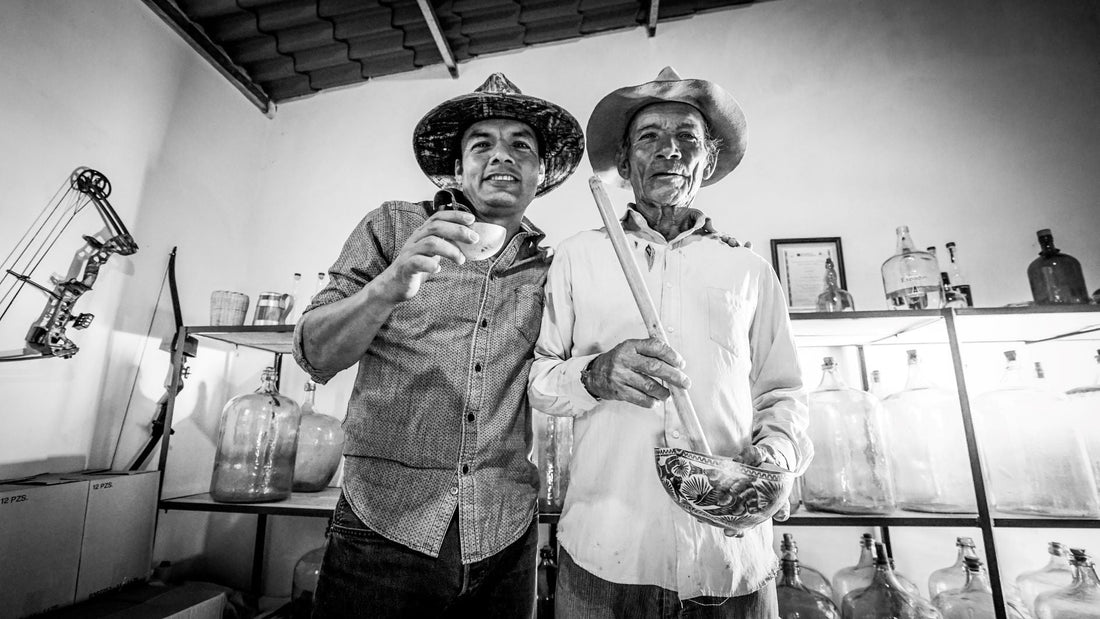
How is exquisite agave schnapps made in harmony with nature?
shares
Since 2013, Noble Coyote has been a project that bears the fingerprint of the people who made mezcal before the pre-Columbian era. The founder of the project is Bernardo Sada, who was born in Oaxaca City in 1986. As an evolutionary biologist, he is successfully involved in various sustainability projects as well as projects on Mexican ancestral botany and pre-Hispanic cultures.

Bernardo Sada - Founder of Noble Coyote
This work brought him together with Eleazar Brena, who is an agronomist and professor at Mihuatlan University in Oaxaca. There he teaches agave reforestation and ecology. His father Don Marcos Brena is the fifth generation to make Mezcal. Don Marcos is 83 years old. Already at the age of 12 he learned what it means to distill Mezcal. He lived through the mezcal ban era, during which he had to secretly make the popular drink. Now he is a shepherd. On his daily 10-kilometer walks with his goats, he discovers wild agaves (Agavensilvestre). They harvest both seeds and piñas from them. Hence the company motto: "The agave is my shepherd."

Father & Son - Maestro Mezcaleros - Don Marcos & Eleazar Brena
The range consists of four agave varieties: Espadín, Tobalá, Coyote de Amatlán (also called Madrecuixe or Madre-Cuishe) and Jabalí. They have been selected for their sustainability. Sustainability is the driving force behind the project. So it is the wish of the founders to transfer their scientific training to the sustainability of Mezcal production. From the procurement of raw materials to production and sales: everything is designed for sustainability in order to protect nature in the best possible way.
Pioneers in the cultivation of rare wild agaves
The Mezcal are made in San Luis Amatlán in Oaxaca by Maestros Mezcaleros. They still know the secret techniques of their ancestors. It is no coincidence that this part of Mexico is considered the birthplace of mezcal: the arid and semi-arid region of Amatlánes in Oaxaca offers a favorable climate for growing agaves – especially wild agaves. They started cultivating Espadín. They then devoted themselves to the reforestation of wild species. This allows the gentlemen to improve biodiversity and maintain the health of the local ecosystem. The company is now pioneering the cultivation of Tobalá and Coyote as semi-wild agaves. At the same time, they are experimenting with growing other noble, wild agaves, including tepeztate. It is still unsuitable for Mezcal production, as it can take up to 35 years to mature.

Replanting wild agave varieties by Mezcal Noble Coyote
Commitment to exquisite mezcal in harmony with the ecosystem
Bernardo and Eleazar often go out into nature. They collect agave seeds that germinate in their greenhouses. Intensive care of the plants is necessary in the first two years of life, since then they are most at risk. Then plant them out in the wild. They have been doing this for many years and are very successful with it. Others do the same. This allows the ecosystem to recover. In addition, the diversity of agaves in the Amatlánes is increasing. This variety is a huge improvement over monoculture. Monoculture is harmful to animals like bees and bats that pollinate the agaves. Bernardo and Eleazar believe that sustainability is more than just an adequate supply of agaves. Instead, it's about helping the ecosystem and nurturing wildlife.

Commitment to Sustainability - Mezcal Noble Coyote
Their commitment directly influences the authenticity of their exquisite mezcals. Each bottle of Mezcal Noble Coyote is an emblem of its Maestro Mezcalero and the village where it was crafted. It also reflects the agave used. And something else is interesting: Bernardo and Eleaza do not believe that the mezcals have aged. They mean that the mezcals age in the agave. After all, the agaves thrive between 8 and 12 years of age and more in Oaxaca. They suck up the sun, air, water and earth. It is the unique terroir of San Luis Amatlán and San Agustín Etla that creates this incomparable taste. We are very happy to offer you these selected mezcals .